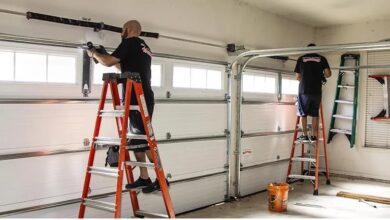The Importance Of Quick Response For Water Damage Cleanup

Water damage is a serious problem that can ruin building materials and make conditions unsafe for building occupants. It can also cause hazardous mold growth and encourage pest infestations.
In addition, a delay in response to water damage can make restoration costs much more expensive. Here are a few reasons why a quick response is crucial:.
1. Minimize the Damage
There’s a reason that every IICRC (Institute of Inspection, Cleaning and Restoration Certification)-trained water damage restoration company offers 24/7 emergency services: the sooner the water is stopped, extracted and dried out, the less severe the damage will be. After just 24 hours, wet materials start to degrade and mold starts to grow, creating a potential biohazard that must be dealt with immediately.
Water easily penetrates materials like wood, drywall and insulation, and when left unaddressed over time, this will lead to rotting and structural damage that’s costly and difficult to repair. In addition, moisture creates the perfect environment for bacteria and mold to thrive, which can lead to health concerns for building occupants.
Water damage restoration companies will immediately turn off power to the affected area to prevent electrical hazards, and then start removing any standing water with wet/dry vacuums, commercial air movers and fans to quickly dry out the structure and its contents. This will help to minimize the amount of damaged materials that need to be replaced, as well as save any salvageable items.
2. Minimize the Risk of Mold Growth
Mold growth isn’t just a nuisance; it can be dangerous for the health of the building’s occupants. It also can be very destructive to wood and drywall. Often, a mold problem that has been left untreated will lead to the need for structural repairs that can be costly.
Molds reproduce through microscopic spores that float through outdoor and indoor air. When wet, these spores become active and start to grow and spread. Molds are natural organisms that play a role in the environment, but they should never be allowed to grow indoors.
It is important to look for discoloration, fuzzy growths and musty smells as signs of mold. If you notice any of these, take action immediately to prevent the problem from spreading.
3. Minimize the Risk of Pest Infestations
Pests are more than just an unwelcome nuisance — they can also carry dangerous diseases and bacteria. The sooner they are dealt with, the less damage they can cause.
Practicing preventative steps can greatly reduce the risk of pest infestations after water damage. This is especially important for food businesses, where a pest infestation can lead to serious problems.
Clutter provides hiding places and breeding grounds for pests. To minimize this, regular cleaning should include sanitizing everything from floors to rugs to beds and mattresses.
Outdoors, woodpiles should be kept away from structures and landscaping materials like weed cloth should be replaced with gravel or rock. In addition, sumps and drains should be regularly checked. And any cracks and gaps should be closed off, using caulk or steel wool as needed.
4. Minimize the Risk of Further Damage
The main reason that quick response for water damage cleanup Oak Harbor is so important is to minimize the potential for structural damage. When water enters a home, it spreads quickly to all of the materials in contact with it, including wood and drywall. Once these materials become saturated, they begin to swell and can cause cracking and buckling. This can lead to severe structural damage if the issue is not addressed immediately.
In addition, if the water has caused flooding or pooling near electrical outlets, it is important to turn off the power before entering the affected area. This can help prevent potentially dangerous electrical problems that could lead to a serious fire or electrocution. Water damage cleanup is a process that should be done by professionals who are trained to use the proper techniques to clean and dry the affected area quickly and thoroughly. This will help to minimize the risk of long-term effects such as mold, dry rot, and pest infestations.



